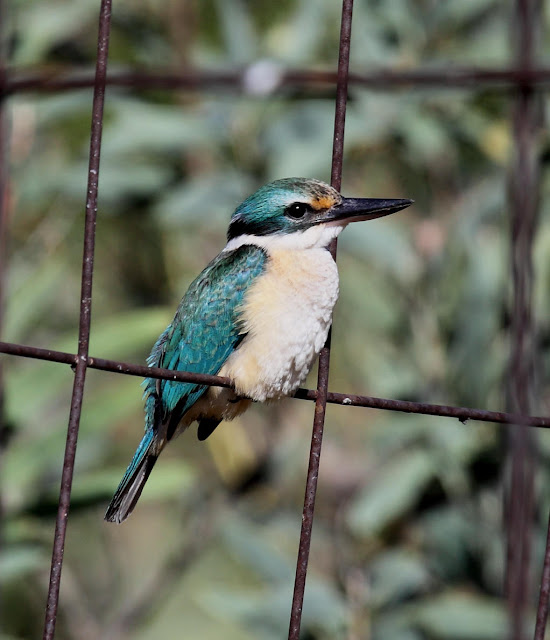 |
| Sacred Kingfisher, Todiramphus sanctus. |
This week the bird in the picture arrives with a swag of mythological associations. This is the Sacred Kingfisher. The shimmering blue-green of the plumage and the buff coloured eyebrow separate him from the more common, Red-backed Kingfisher. This bird has been referred to as “sacred” as far back as the 16th century when early ornithologists noticed the great reverence the bird was held in through much of the Pacific.
Its previous generic name, Halcyon, was a reference to ancient Greek mythology. Ceyx, the King of Thessaly, drowned during a long sea voyage. On hearing of his death, his wife Halcyone, turned into a kingfisher. Hearing the kingfisher’s loud lamentations, the gods brought her drowned husband back from the dead as another kingfisher and the couple were reunited. They created a floating nest for their eggs out on the sea, and Halcyone’s father Aeolus, the god of wind, kept the sea calm so as not to tip his daughter’s eggs into the sea. This is where we get the term “halcyon days” referring to a time of calm and peace. The name Ceyx, is also now used as a scientific name for a different group of kingfishers.
You should keep an eye out for the Sacred Kingfishers as they arrive back from their northerly migration in the coming weeks. Another bird which is on its way back from spending winter in the warmer climes up north is the Rainbow Bee-eater. Mark Carter has reported the first of these birds returning this week to add a splash of colour as we head towards warmer weather.
A bit of maintenance occurring at the sewage ponds will mean a few changes to water levels, but no changes to birding access.
As always, send your sightings to- comebirdwatching@gmail.com
…And happy Birding!
